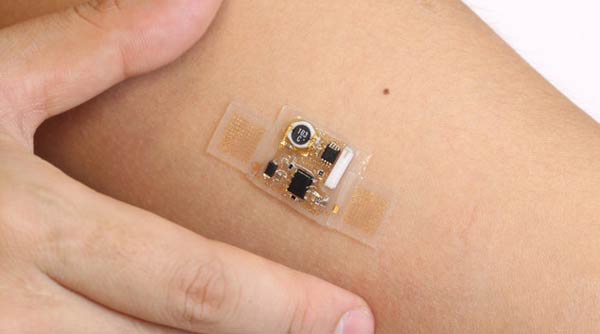
Researchers from Stanford Medical Center recently announced the results of a study, where they compiled tons of wearable data, then shoved it through some fancy algorithms to see what they could inform wearers. The results of their work were not part of the current wearable data spectrum. It seems we can use what they learned to get ahead of illness symptoms.

(source: blog.mysillylife.net)
Everyone has a regimen. The first signs of a cold and you nosh chewable vitamin C tablets like they were M&Ms or maybe you reach for chicken soup.
Whatever your potion, that thing you do to offset the incoming bug is always too-little-too-late. The battle for your health is well underway; you’re doing damage control at best.
What if you could know sooner, from the moment the first battle began? What if you could know this information by wearing that wrist tracker you shoved in a drawer last year? According to this research, it’s not a matter of if, but when.
Today’s Wearables
(source: askmen.com)
If you’re reading this, there’s a good chance you have something smart on your wrist right now. Either that or you are considering a purchase.
The current wearables market provides a robust spectrum of sensors, from activity monitors to heart rate sensors, body composition and internal temperature readings, even blood-alcohol data.
In fact, the Stanford team used the wearables we have now to collect much of the data they used for the study.
The Study

(source: sse.stanford.edu)
Using a group of 60 people, the Stanford researchers measured and loaded data from those people into a database. From there, they were able to establish a baseline. The data they collected was lab data, including genomics and super nerdy stuff.
Then volunteers donned a much of wearables, collecting 250,000 measurements per day. The metrics were everything they could measure from those devices.
All of that data, when compared against the benchmarks, allowed researchers to see abnormalities. They could tell when someone’s body wasn’t functioning properly. They noticed that they could detect early signs of insulin resistance, inflammation, even Lyme disease.
It wasn’t an absolute, but they could determine that there may be something worth investigating long before symptoms appeared. The error rate was almost negligible according to the researchers.
Tomorrow’s Wearables

(source: techassimilate.com)
Despite the positive attitude of the Stanford researchers, they’re barely to the tip of this iceberg. Future wearables could become powerful health trackers with a few modifications.
In some ways they already are. The current lot of wearables have many of the foundational elements, but accuracy isn’t consistent.
There are some missing pieces to the puzzle too, like no tracker can measure weight fluctuations, not without a connected scale and your commitment to using it. They also cannot collect blood oxygen yet, but they could soon.

(source: ironicman.wordpress.com)
The challenge is tempering this information with wisdom. Almost none of the wearables today have FDA approval. It’s a long complicated process, which can cost money in lost revenue.
That means until we can buy FDA approved wearables, we’re working with devices that are not consistent. Some worry that people wearing these devices, when they learn that they may have indicators, will flood the hospitals with unnecessary concerns.
In this writer’s opinion, that’s no different than what people do today with WebMD. Today’s patients may suffer more hypochondria, but they are better informed than patients before the internet. The more information people have, the better they will be at making decisions, understanding information from their doctors.
Our truth lies with more and better information. This may be the way we get there.